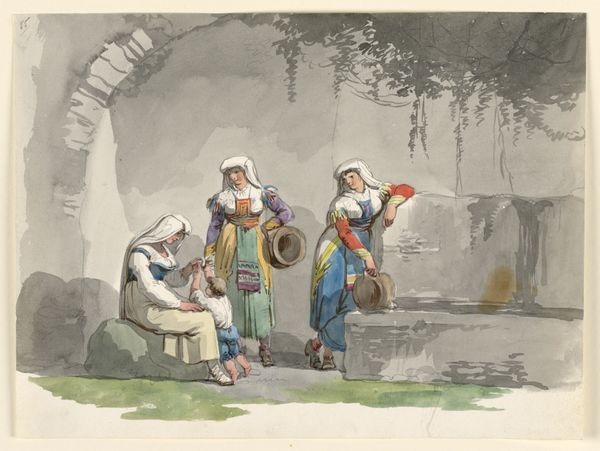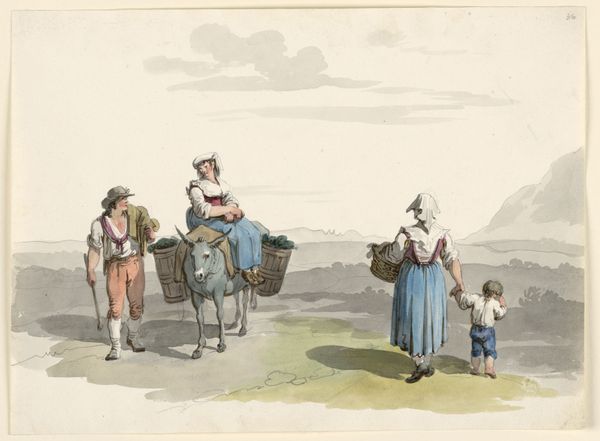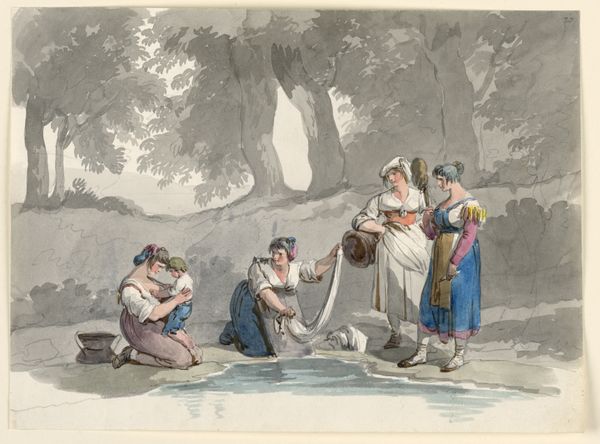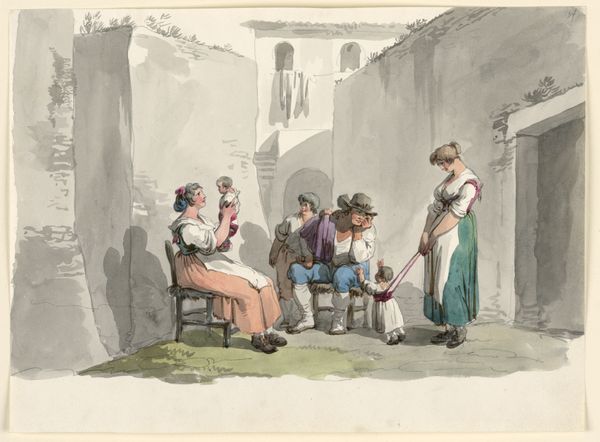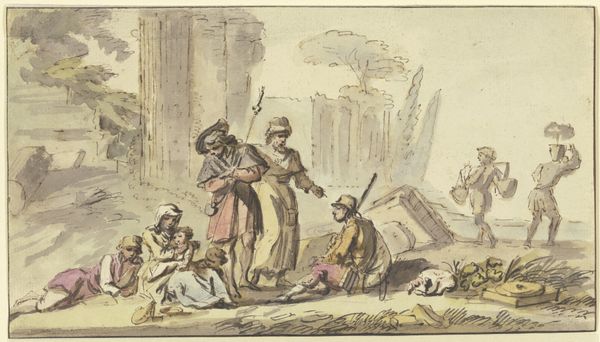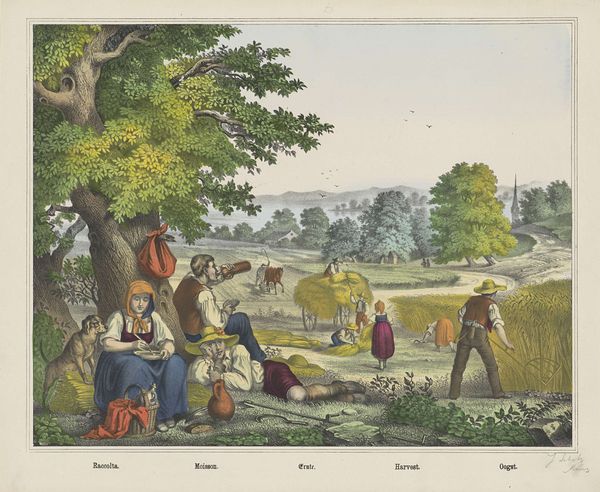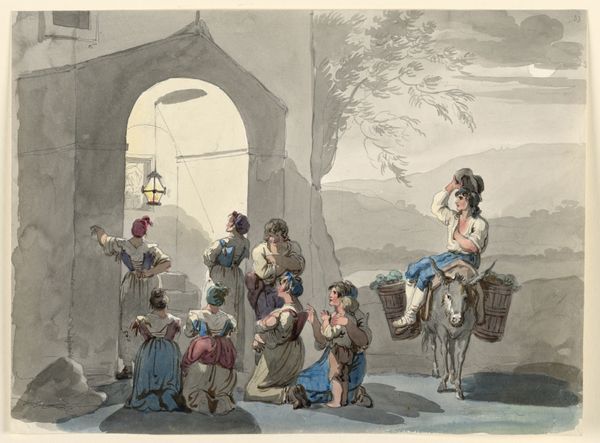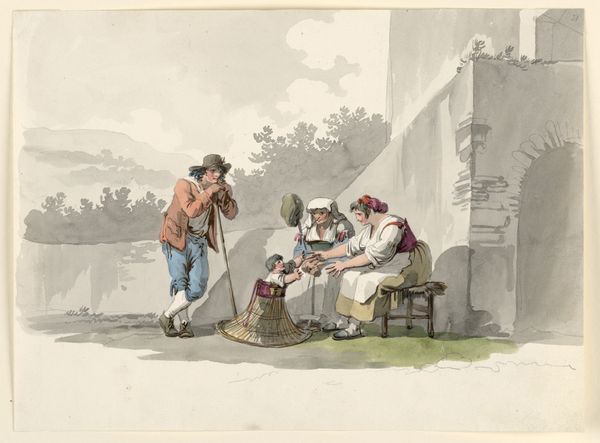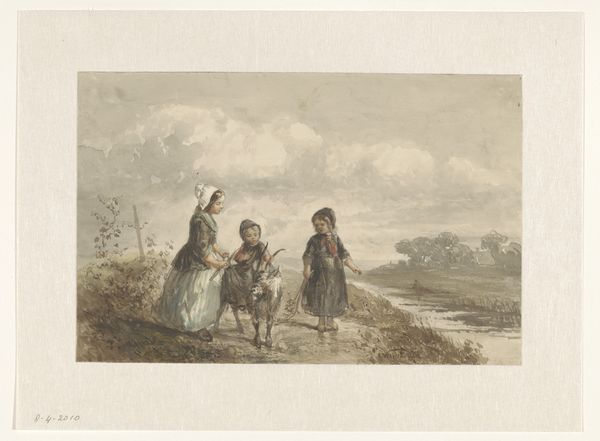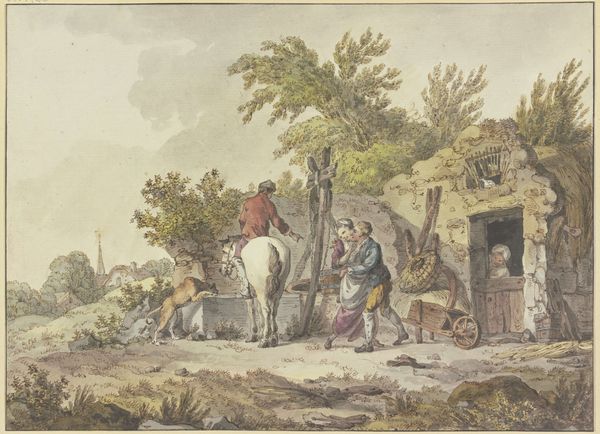
A Woman Holding a Boy with Her Hand Passing a Gentleman Seated Among Ruins in the Campagna 1807
0:00
0:00
drawing, watercolor
#
portrait
#
drawing
#
landscape
#
figuration
#
watercolor
#
romanticism
#
watercolour illustration
#
genre-painting
Copyright: Public domain
Editor: Here we have Bartolomeo Pinelli’s "A Woman Holding a Boy with Her Hand Passing a Gentleman Seated Among Ruins in the Campagna", an 1807 watercolor and ink drawing. The subdued color palette lends the whole scene a kind of pensive, observational quality, don't you think? What aspects of its composition stand out to you? Curator: The composition's tripartite division is most compelling. Note the calculated placement of the figures, meticulously arranged in relation to the architectural elements. The gentleman's languid posture, juxtaposed with the woman's upright stance and the child's dependence, speaks volumes through purely visual means. Consider the interplay of line and wash—how do these elements guide the viewer's gaze and create a sense of depth? Editor: I see what you mean about the depth! It's like the aqueduct pulls you further into the piece. And the wash almost gives a soft glow to everything. Does the somewhat faded look have any bearing on how we should view it? Curator: It invites closer scrutiny of its formal characteristics. We must move beyond anecdotal interpretations. Ponder the semiotic relationship between the aqueduct and the seated gentleman. Are we to regard them as signs pointing to the decay of classicism, or perhaps symbols of temporal continuity? What inferences may we draw from the structural parallels between the woman and the ruin adjacent to the gentleman? Editor: That's fascinating; I hadn't considered that structural parallel before. It definitely complicates the narrative I was initially imposing on the piece. Thanks, that gives me a new lens for looking at art. Curator: Precisely. Our focus on line, form, and compositional structure enables a far richer encounter. These purely visual elements often resonate more powerfully than simple subject matter.
Comments
No comments
Be the first to comment and join the conversation on the ultimate creative platform.
